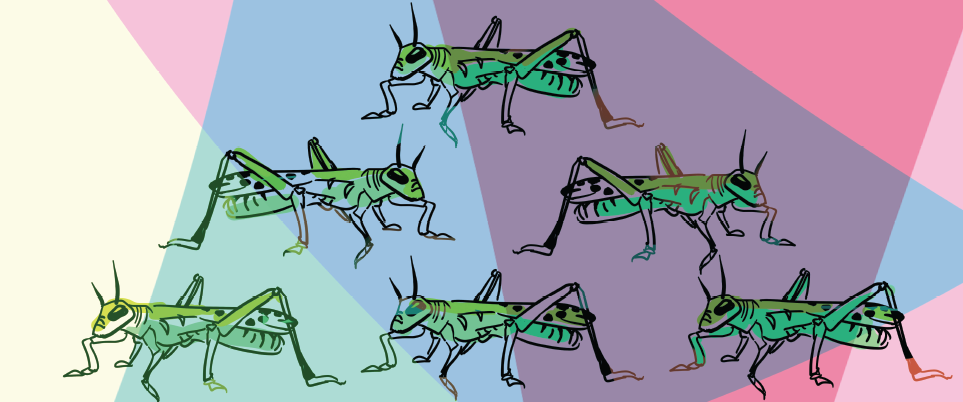
For most people, the word “swarm” suggests buzzing clouds of hungry locusts, angry bees and bloodthirsty mosquitoes -— all things to be avoided. But recently, a group of Yale engineers brought insects into their laboratory to discover how the mathematics behind swarming behavior could guide technological advancements.
In an article published in Physical Review Letters this September, three former members of Yale’s Department of Mechanical Engineering and a current Yale physics professor described a novel approach to comparing models of insect swarms with data. The scientists analyzed the swarming behavior of Chironomus riparius, a small fly, in a laboratory environment. Former Yale mechanical engineering professor and study author Nicholas Ouellette said his research contributes to the scientific understanding of collective behavior across the animal kingdom, from schools of fish to herds of antelope.
James Puckett, a physics professor at Gettysburg College who helped conduct the experiment when he was a postdoctoral fellow at Yale, pointed out that their research is also central to the daily life of humans, citing traffic patterns as a prime example of collective behavior. The Yale experiment was funded by a grant from the U.S. Army Research Office, which is interested in applying these new models of collective behavior to robotics.
“If we are to make robots smarter and work better together, then these systems that have been optimized through millions of years are a good place to start looking,” Puckett said.
The work of Puckett, Ouellette and their colleagues could also create new ways to stabilize electronic systems like power grids.
Ouellette’s lab maintained a C. riparius colony in water-filled tanks, and let the aquatic larvae grow into their winged adult form. In the experiment, the scientists disturbed the swarming flies with an amplified recording of a male riparius’ humming wings. Three cameras in the flies’ tank captured 100 images per second of the swarm as it reacted to the noise. The researchers used computers to track the movement of every individual fly in swarms of up to 100 insects, according to the study.
“If we simply played a sound at a constant amplitude, nothing happened. However, if the sound was modulated we observed that we could drive the swarm back and forth,” Puckett said.
The researchers found that the swarm’s movement was a direct, linear response to the noise disturbance. The swarm’s collective center-of-mass velocity increased as the researchers made the sonic stimulus louder, according to the study.
“Dr. Ouellette has shown that even these seemingly chaotic swarms exhibit striking order at the group level,” said Ryan Lukeman, a mathematics, statistics and computer science professor at St. Francis Xavier University who was not involved with the study.
Ouellette said his lab’s experiment was different from previous studies of collective movement in animals because of its manipulation of the insect swarm’s behavior. While other researchers have focused on identifying patterns in systems that they can only observe, the Yale team used a materials science approach, manipulating the object of study to empirically understand its physical properties, Ouellette said.
Ouelette’s study is the first to do this with swarms of macroscopic animals.
“By perturbing and observing the response in real systems, we can then perturb our model systems in similar ways and determine whether the experimental observations are borne out in the model,” Lukeman said. “It is how science should be done, but the difficulty of performing these studies on animals can often get in the way of this process.”
Ouellette said that the flies’ small size and high swarming tendency made them ideal for laboratory experimentation.
“In the adult stage of their life cycle, swarming is all that [the flies] do. They swarm, mate and die,” he said.
In his new lab at Stanford University, Ouelette said that he is continuing to use swarming insects in experiments to build upon the research he did at Yale.







